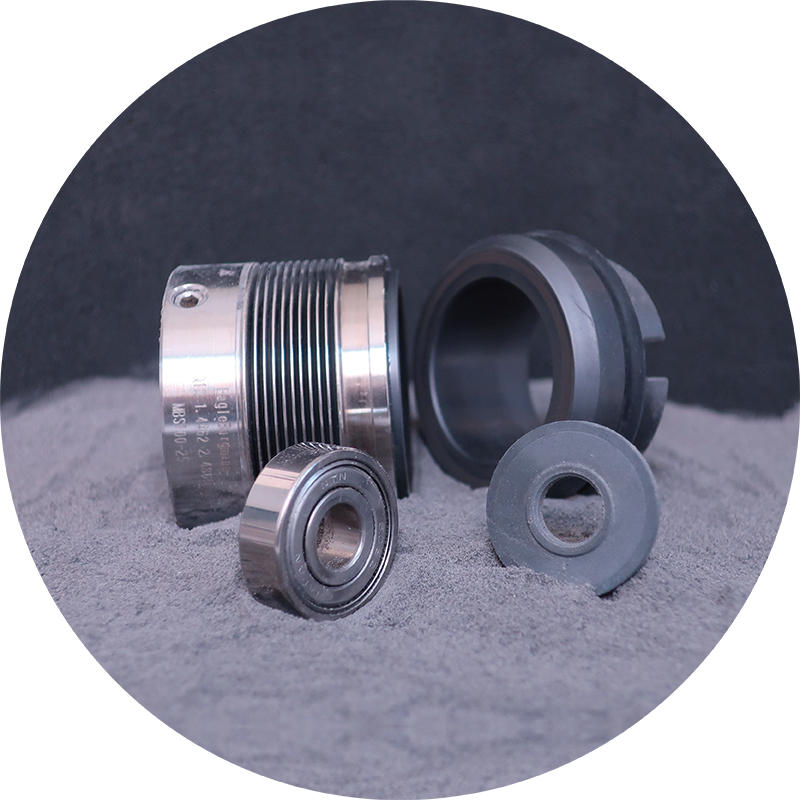Research and Development Directorate
Using a New Sealing Technology to
Protect the Equipment from the Sand on the Moon
Creating parts that will support the future of lunar surface exploration
The Research and Development Directorate is conducting research and development in a variety of areas, with a focus on the two categories of "leading research" that will create "future," and "Research for Secure Development and Success of Missions" that will connect "now" and "the future."
One of such research and development is the dust-proof sealing technology for exploring the polar regions of the moon's surface. Seals prevent leakage of liquids and gas from within the equipment, and also prevent external foreign substances such as dust and fine sand from entering into the equipment. Using an example from what we see in our daily lives, the waterproofing packing used around the faucets are also a type of such seals.
The surface of the moon is covered by fine, hard and pointed sand called regolith. Seals used on lunar rovers (explorer vehicles) must be optimized for the lunar environment, in order to prevent the intrusion of regolith into key components of the rover or the equipment loaded on to it. Moreover, the rovers need to have the sturdiness to remain in operation even when moving over the regolith, and must also be energy efficient so that it can operate with a limited amount of electric power.
Two sealing technologies that make use of 10 years of research
Koji Matsumoto, a specialist on mechanism and lubrication technologies who is working on this research, says that they are moving forward with the research and development of sealing technologies for the rotating shaft, of which there are mainly two types. One is the mechanical seal used in places that need to be completely and solidly insulated, such as on the main shaft of the rover.
"We selected and developed materials and coatings that are hard and have low friction, so that even if the regolith enters the sealing surface between the rotation part and the fixed parts, the seal would not wear off nor lose its sealing ability. We also optimized the amount of force used to press the seal against the equipment, so that the sealing function could be maintained while also keeping the force needed for the rotation to be as small as possible."
The other type of seal is the simplified one for the bearings that will be in direct contact with the regolith.
"We are making research on a seal type that uses ring-shaped resin material called 'collar,' and a seal type that uses a felt material. The collar seal was designed so that the resin collar would seal by pressing down tightly on the side face of the bearings, and we worked on optimizing the amount of force for holding down the seal. For the felt seal, this was a new attempt of using felt material for use in outer space. It ensures high sealing performance while enabling rotations with minimal resistance. Also, the polar region of the moon is a vacuum, with extremely low temperatures going down to nearly -200 degrees Celsius. So we also had to tackle the issue of developing a material that would be able to maintain its sealing performance, as well as its friction and wear properties, even in this kind of an environment."
JAXA has been conducting research over a long period of time on mechanism and lubrication technologies in the extreme environments of space over a long period. As one of them, Matsumoto has been spending about 10 years in the research and development of various sealing technologies, and materials and coatings for wear resistance against the regolith. He says that he faced difficulties not only in the development of the seals themselves, but also in establishing testing technologies that would enable conducting tests in a vacuum environment with simulated regolith, as well as in developing such testing devices.
The cooperation with private companies is also essential to bring the results of such research into practical use. Work is moving forward, in collaboration with the seal manufacturer Eagle Industry and the bearings manufacturer NTN, with the aim of achieving practical implementation as soon as possible.

from the circumference side of the shaft makes it susceptible to changes in temperature,
so the point is in having adopted a method of sealing from end face of the shaft."
Profile

|
|
|---|
- Home>
- Global Activity>
- Public Relations>
- JAXA’s>
- JAXA's No.77>
- Using a New Sealing Technology to Protect the Equipment from the Sand on the Moon